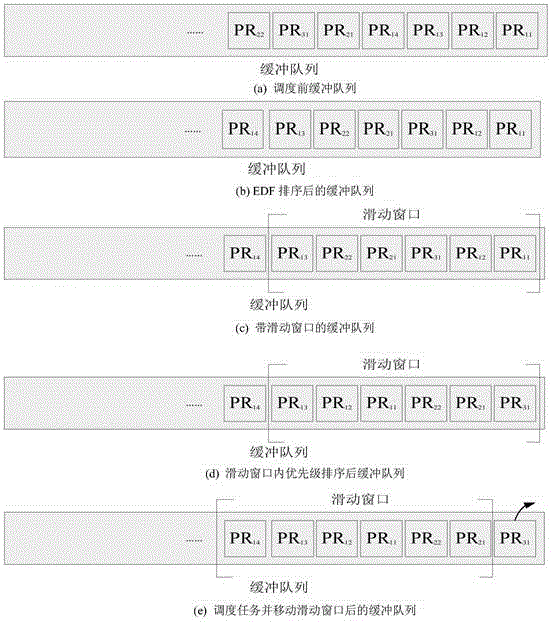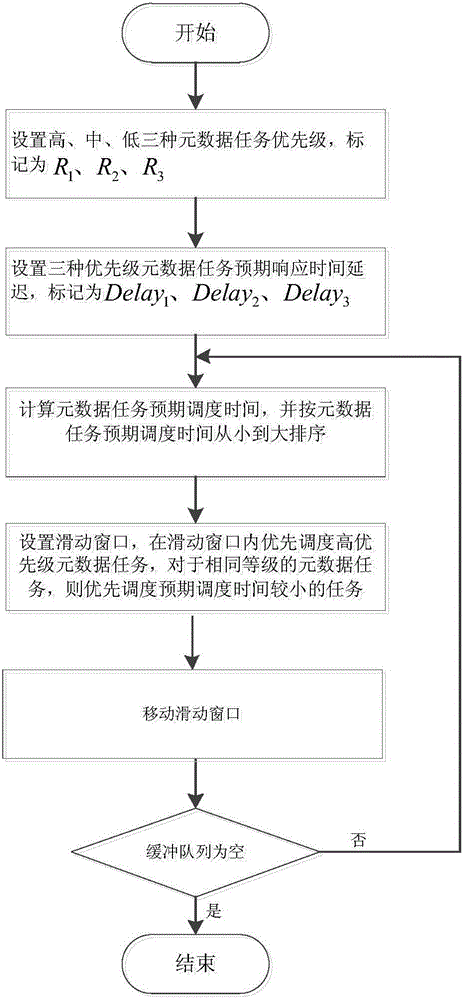Sliding window-based multi-priority metadata task scheduling method
A sliding window and task scheduling technology, which is applied to electrical components, multi-programming devices, transmission systems, etc., can solve problems such as no classification, suspended animation, and failure to respond to low-level requests, and achieve the effect of taking into account fairness
- Summary
- Abstract
- Description
- Claims
- Application Information
AI Technical Summary
Problems solved by technology
Method used
Image
Examples
Embodiment Construction
[0015] The present invention will be further described in detail below in conjunction with the accompanying drawings and specific implementation.
[0016] Such as figure 1 As shown, the sliding window-based multi-priority metadata task scheduling method of the present invention includes the following steps:
[0017] S1. Set the task priorities of high, medium and low metadata, respectively denoted as R 1 , R 2 , R 3 ;priority can be set as follows:
[0018] The first is to classify according to the type of business, and classify according to the real-time requirements of the requested business. For example, voice services, video-on-demand, etc. have high real-time requirements, and need to select a higher priority, while services such as mail and network disks are allowed. A certain delay can be arranged with a lower priority;
[0019] The second is to distinguish directly by user registration information. Users who access the cloud computing platform must register before...
PUM
 Login to View More
Login to View More Abstract
Description
Claims
Application Information
 Login to View More
Login to View More - R&D
- Intellectual Property
- Life Sciences
- Materials
- Tech Scout
- Unparalleled Data Quality
- Higher Quality Content
- 60% Fewer Hallucinations
Browse by: Latest US Patents, China's latest patents, Technical Efficacy Thesaurus, Application Domain, Technology Topic, Popular Technical Reports.
© 2025 PatSnap. All rights reserved.Legal|Privacy policy|Modern Slavery Act Transparency Statement|Sitemap|About US| Contact US: help@patsnap.com


